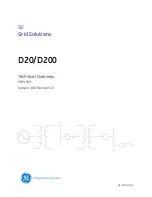
9
Connecting the ST Power Cord
(1) Confirm that the ST unit’s Power Cord is
unplugged from the power supply.
(2) Remove the power connector (plug)
from the main unit.
(3) Loosen the three screws in the center of
the Power Connector.
(4) Strip the power cord, twist the
conductor’s wire ends, insert them into
the pin terminal and crimp the terminal.
Attach the terminal to the power
connector.
(5) Fix it with screws.
• Use a flat-blade screwdriver (Size 0.6
X 3.5) to tighten the terminal screws.
The torque required to tighten these
screws is 0.5 to 0.6 N
•
m [5-7Lb
•
In.].
• Do not solder the cable connection.
(6) Attach the Power Connector to the ST
and fix it to the ST main unit with right/
left tightening screws.
3.
Power Supply Cautions
• Input and Output signal lines must be sepa-
rated from the power control cables for
operational circuits.
• To improve the noise resistance, be sure to
twist the ends of the power cord wires
before connecting them to the Power con-
nector (Plug).
• The ST unit’s power supply cord should
not be bundled with or kept close to main
circuit lines (high voltage, high current), or
input/output signal lines.
• To reduce noise, make the power cord as
short as possible.
• If the supplied voltage exceeds the ST
unit’s range, connect a voltage trans-
former.
• Between the line and the ground, be sure to
use a low noise power supply. If there is an
excess amount of noise, connect a noise
reducing transformer.
• The temperature rating of field installed
conductors: 75°C only.
• Use voltage and noise reducing trans-
formers with capacities exceeding
Power Consumption value.
• Must be used with a Class 2 Power Supply.
(24VDC)
• Connect a surge absorber to handle power
surges.
• Be sure to ground the surge absorber
(E1) separately from the ST unit (E2).
Select a surge absorber that has a
maximum circuit voltage greater then
that of the peak voltage of the power
supply.
+
-
FG
Lightening Surge Absorber
E1
E2
FG
ST






























